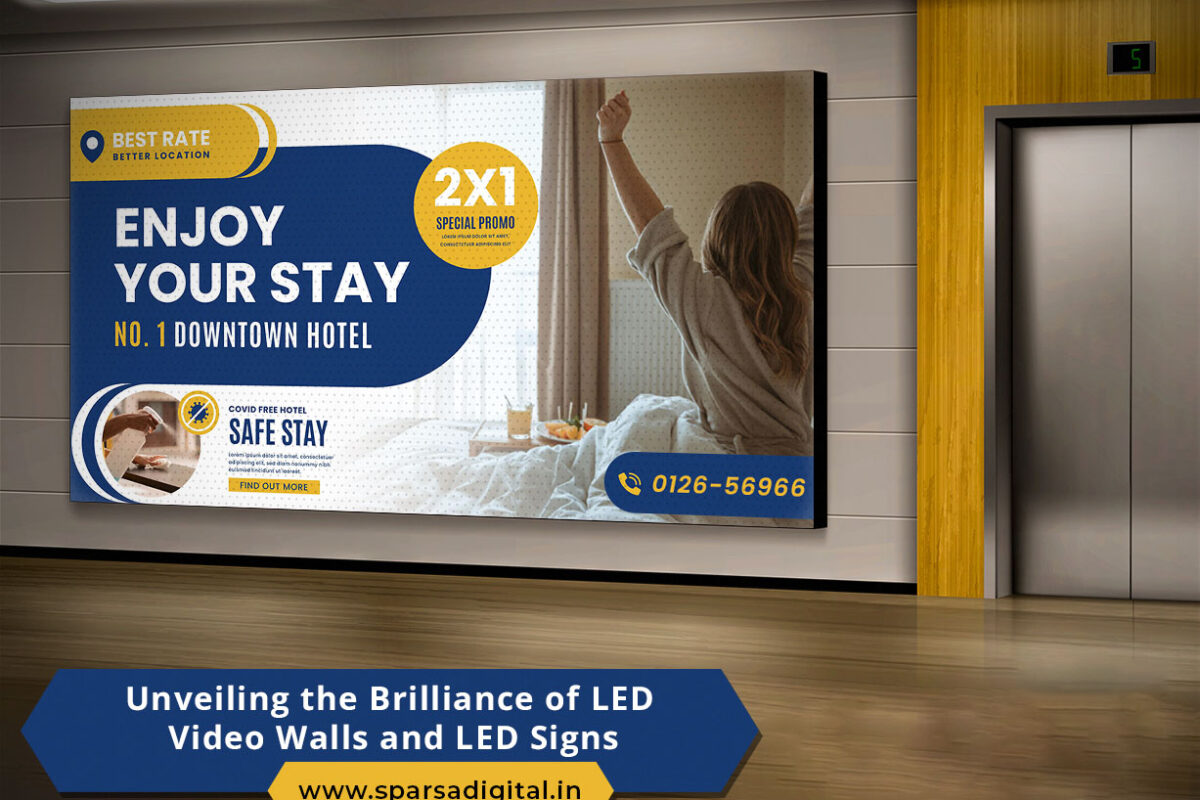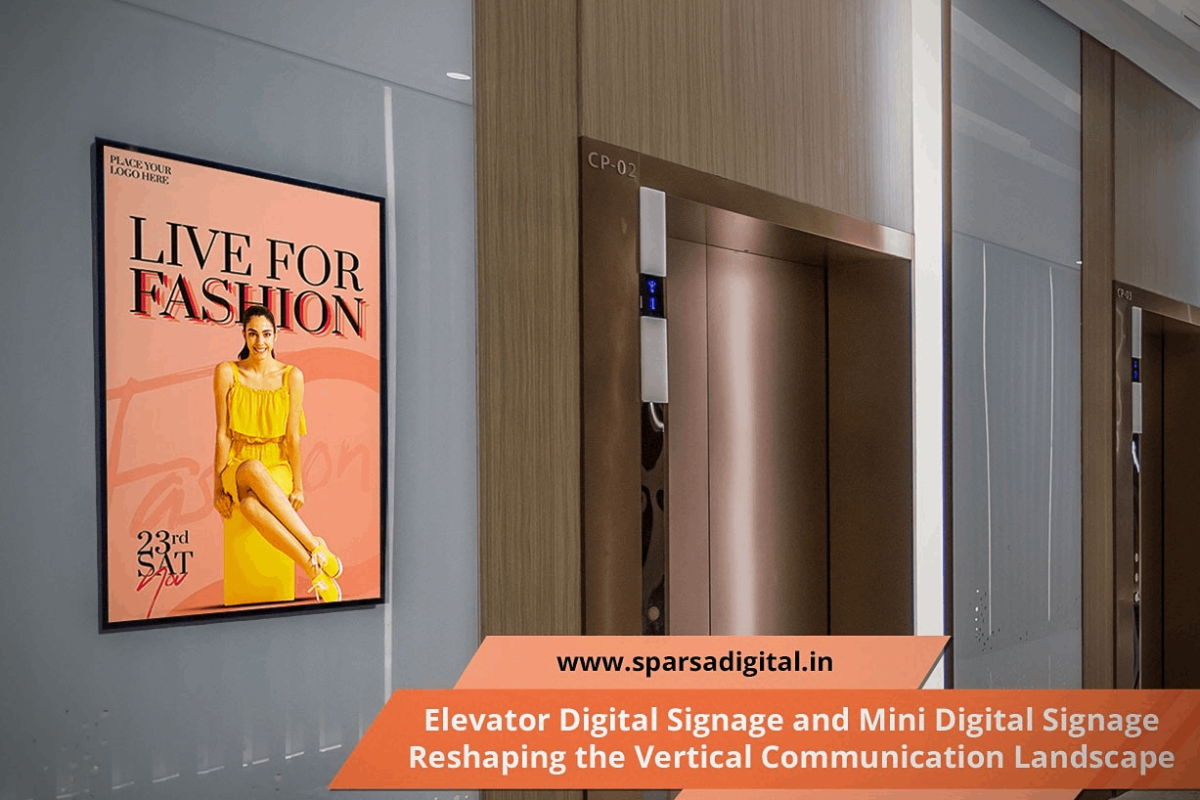In the realm of visual communication, LED technology has emerged as a trailblazer, transforming the landscape of advertising, entertainment, and information dissemination. LED video walls and LED signs have become integral elements in modern urban environments, captivating audiences with their vibrant displays and dynamic capabilities. This blog will delve into the intricacies of LED technology, exploring the evolution, applications, advantages, and future prospects of LED video walls and signs.
The Evolution of LED Technology
The journey of LED technology began with humble origins, evolving from basic light-emitting diodes to the sophisticated displays we see today. Initially used for indicator lights, LEDs gradually progressed to larger applications, including alphanumeric displays. The breakthrough came with the development of full-color LEDs, paving the way for vibrant and visually stunning displays. The continuous refinement of LED technology has resulted in higher resolutions, enhanced color accuracy, and improved energy efficiency.
Understanding LED Video Walls
LED video walls represent a fusion of art and technology, creating immersive and captivating visual experiences. These walls consist of an array of LED modules seamlessly tiled together to form a cohesive and seamless display. The modular nature of LED video walls allows for scalability, enabling the creation of displays of virtually any size and shape. From sports arenas to shopping malls, LED video walls have found applications in diverse settings, captivating audiences with high-resolution imagery and dynamic content.
Applications of LED Video Walls
a. Entertainment Venues: LED video walls have become a staple in entertainment venues, providing concert-goers and sports enthusiasts with larger-than-life visual experiences. The versatility of LED video walls allows for the creation of interactive and engaging displays that enhance the overall entertainment value.
b. Retail Environments: In retail settings, LED video walls serve as attention-grabbing displays for advertising and branding. These walls can be customized to showcase product promotions, advertisements, and brand messaging, creating an immersive shopping experience for customers.
c. Control Rooms: LED video walls find crucial applications in control rooms, where real-time data monitoring and decision-making are essential. The high resolution and seamless integration capabilities make LED video walls an ideal choice for command centers and control rooms in sectors such as transportation, utilities, and security.
The Advantages of LED Video Walls
a. Brightness and Visibility: LED technology offers exceptional brightness, ensuring optimal visibility even in well-lit environments. This makes LED video walls ideal for outdoor advertising and daytime events.
b. Energy Efficiency: Compared to traditional display technologies, LEDs are more energy-efficient, contributing to sustainability efforts. The low power consumption of LED video walls makes them a cost-effective and environmentally friendly choice.
c. Flexibility and Customization: The modular nature of LED video walls allows for creative and customizable displays. From curved installations to unconventional shapes, LED video walls offer unparalleled flexibility in design.
d. Longevity and Reliability: LEDs have a longer lifespan compared to traditional display technologies, contributing to the overall cost-effectiveness of LED video walls. Additionally, LEDs are known for their reliability, providing uninterrupted performance over extended periods.
LED Signs: Illuminating the Information Highway
a. Outdoor Advertising: LED signs have revolutionized outdoor advertising, providing businesses with dynamic and eye-catching displays. Whether on billboards, storefronts, or roadside signs, LED technology ensures that messages are delivered with maximum impact.
b. Wayfinding and Information Displays: LED signs play a crucial role in guiding people through complex environments. From airports to shopping centers, LED signs provide clear and dynamic wayfinding information, enhancing the overall visitor experience.
c. Digital Menus: In the hospitality industry, LED signs have become popular for digital menus. The dynamic nature of LED displays allows for easy updates and customization of menu items, contributing to a modern and efficient dining experience.
The Future of LED Technology
As technology continues to advance, the future of LED displays holds exciting possibilities. Innovations in materials, manufacturing processes, and display technologies are likely to result in even higher resolutions, improved energy efficiency, and expanded applications. The integration of AI and smart technologies may further enhance the interactivity and adaptability of LED displays, opening up new avenues for communication and engagement.
Conclusion
LED video walls and LED signs have transcended the boundaries of traditional display technologies, reshaping the way we perceive and interact with visual information. From the evolution of LED technology to the myriad applications and advantages, these displays have become indispensable in various industries. As we look towards the future, the continued innovation in LED technology promises to bring about even more dazzling and immersive visual experiences, further cementing LED displays as beacons of brilliance in the digital landscape.
In conclusion, LED video walls and LED signs have reshaped the visual landscape, offering unparalleled possibilities in terms of design, communication, and engagement. As technology continues to advance, these displays will likely play an even more significant role in how information is presented and consumed, making them a beacon of innovation in the digital age. The journey from traditional displays to the brilliance of LEDs is not just a technological evolution but a transformative force shaping the way we experience the world around us.
Wish to get started? Connect with our experts at Sparsa Digital today, and wait no more. Our team of seasoned experts ensure delivering the highest quality of solutions considering business’ needs and requirements. It is never too late to begin. Schedule your appointment with us now!



